10 Suspension Terms Every Gearhead and Tuner Needs to Know
Diving into the world of suspension tuning can be confusing for first-timers, as there are many new concepts waiting to be discovered. Before you can set up your vehicle's suspension to reflect the specific performance and handling characteristics you're looking for, it's helpful to familiarize yourself with the components sitting under the chassis, and the tweaks that can be made to them.
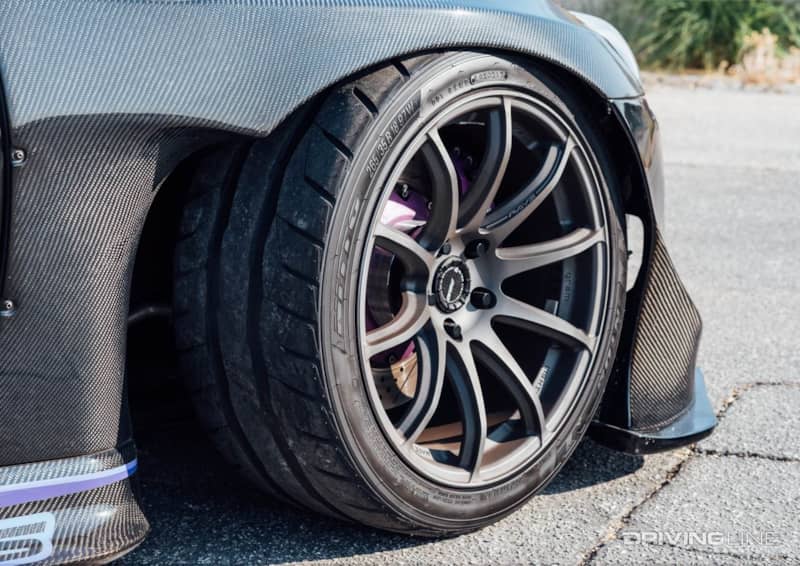
Here are 10 suspension terms that every gearhead and tuner needs to know.
Camber
Camber refers to the vertical angle of a wheel. When seen from the front of a vehicle, if the top of a tire leans out and away from the center of the hub it is referred to as positive camber. It the tire leans inward towards the automobile, it's called negative camber.
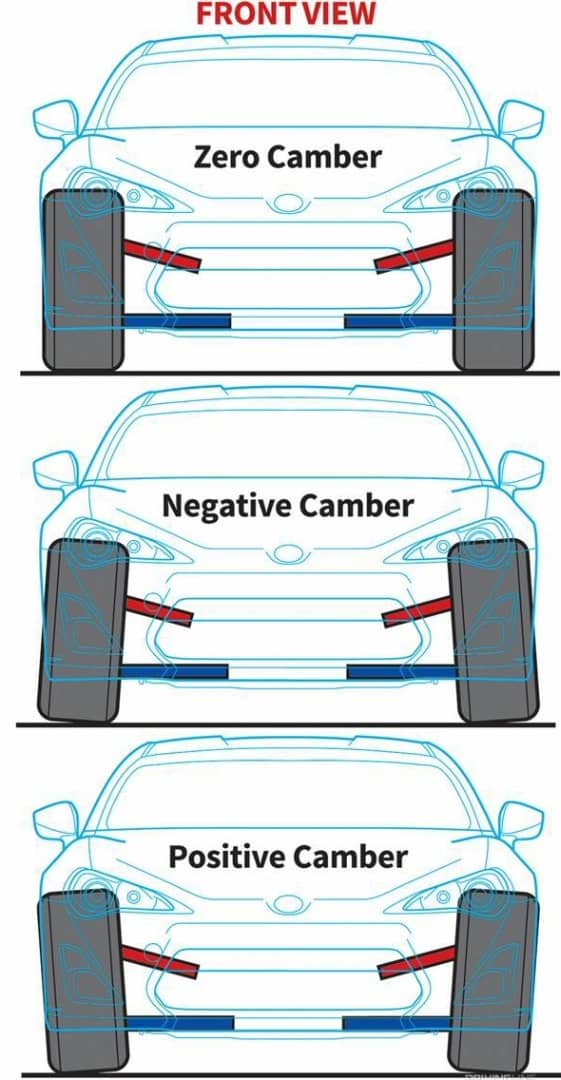
In a performance setting, negative camber is used to increase the contact patch of a tire as the wheel turns. As a vehicle's weight rolls through a corner, the lateral load transfer increases the size of its contact patch at the moment it is most needed, while also protecting the outside shoulder of the tire from additional wear. On the street, however, negative camber can lead to excessive wear on the inside of the tire over thousands of miles of regular driving.
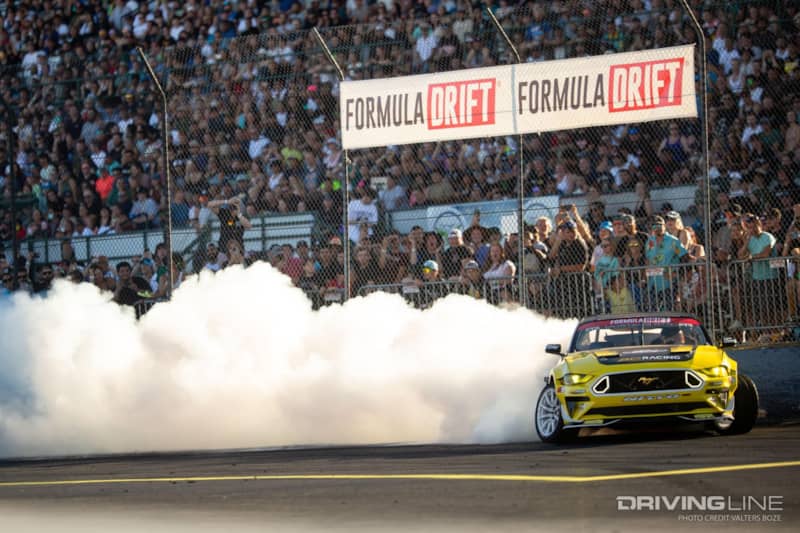
Caster
Caster refers to the angle of a wheel as compared to a straight line drawn through where the wheel center meets the shock mount (or steering axis). Neutral caster setups position the shock mount directly over the center of the wheel. Positive caster pushes the wheel ahead of this line, while negative caster moves it behind this line.

Negative caster is not used in modern vehicles. Adding positive caster improves stability at high speeds by introducing self-aligning torque that works to return the front wheels to 'straight' when removing steering input. It also helps to increase negative camber during cornering, which improves handling as well as stability.
Coilover
Full-bodied coilovers are a shock-and-spring setup that combine a threaded shock body surrounded by a spring.
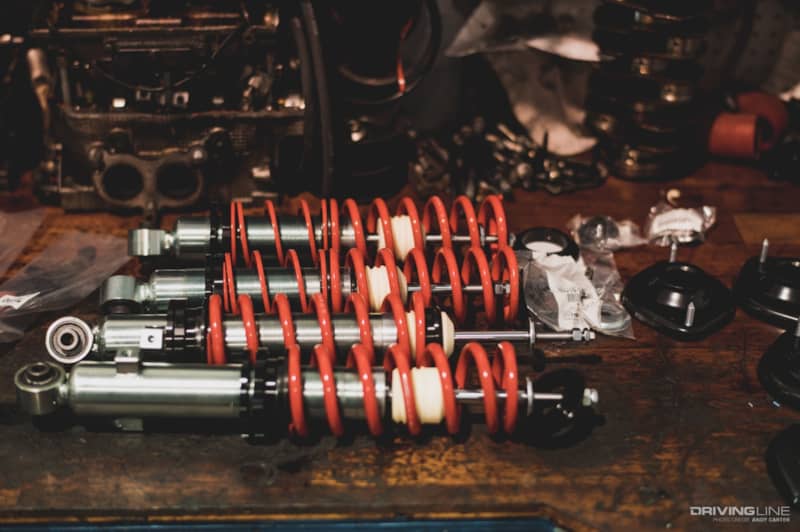
Ride height adjustments can be made by compressing or expanding that spring using a mechanism built into the coilover itself
Compression
Compression is the force required to move a shock absorber's piston into its body, which is what happens when a wheel hits a bump in the road. On an adjustable shock, it's possible to add or remove compression, which is to say increase or decrease the resistance of the fluid that the piston is moving through.
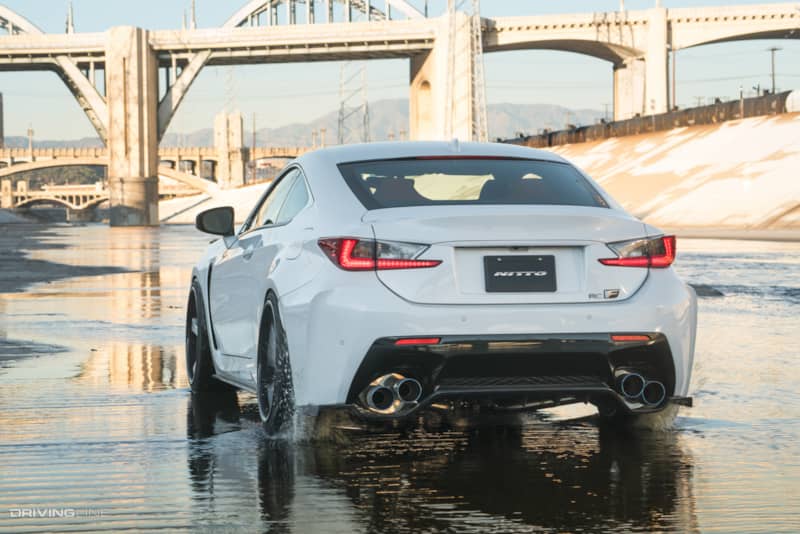
It's helpful to think of compression as controlling the movement of a vehicle's unsprung weight (its wheels and tires). Adding 'more' compression will result in a stiffer ride as the wheels will not bounce as much when encountering a pothole or curbing. Too much compression will result in a vehicle that shakes and shudders across a rough surface without the shock absorbing any of the impact.
Rebound
Rebound is the measure of how easily a shock absorber's piston returns to its default position after compression. Adding 'more' rebound will dial back body movement during cornering, as it helps control the movement of the vehicle's springs. As with compression settings, too much rebound will lead to an overly stiff ride.
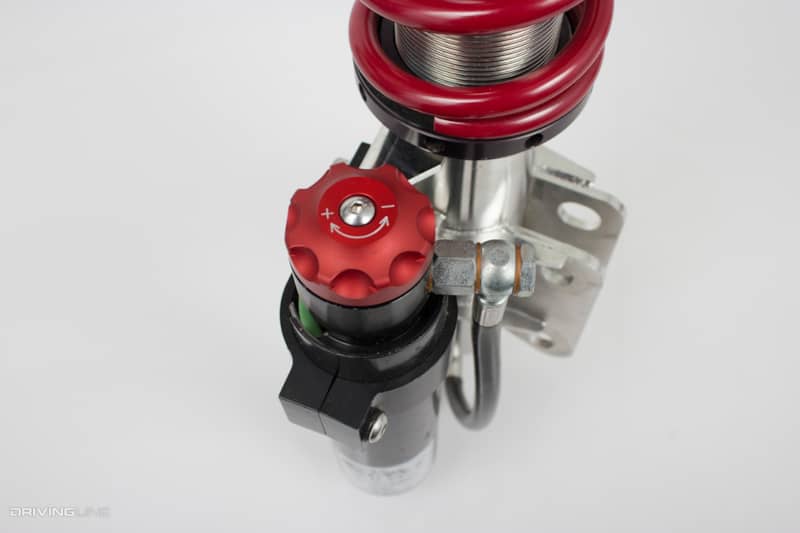
Some shock absorbers allow for the adjustment of rebound and compression separately, while others offer the adjustment of one of these settings, or both simultaneously.
Shock Absorber
A shock absorber is the fluid-filled tube in which the piston mentioned above moves up and down while driving, absorbing impacts and helping to keep the tire in contact with the road rather than simply bouncing up in the air when encountering a bump.
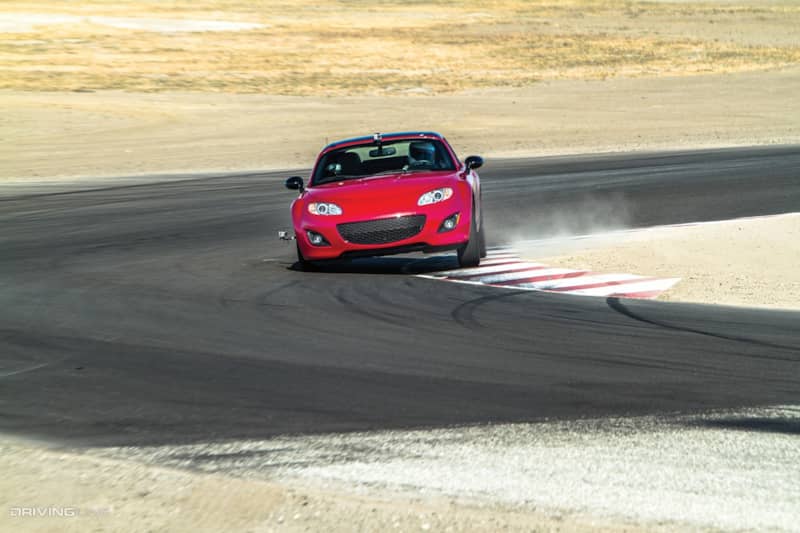
Shocks control piston movement by way of valving, which slows the speed of fluid depending on the position of the piston itself. Most shocks also contain a chamber filled with nitrogen gas that is separate from the oil chamber (monotube design) or in an outer tube (twin-tube design). The nitrogen introduces additional pressure that reduces aeration as the result of heat build-up. Some can be filled with a magnetic fluid that uses an electrical charge to increase or decrease piston movement.
Strut
A strut is a damper, like a shock absorber. However, the strut replaces numerous suspension components into a single, smaller, and lighter structure.
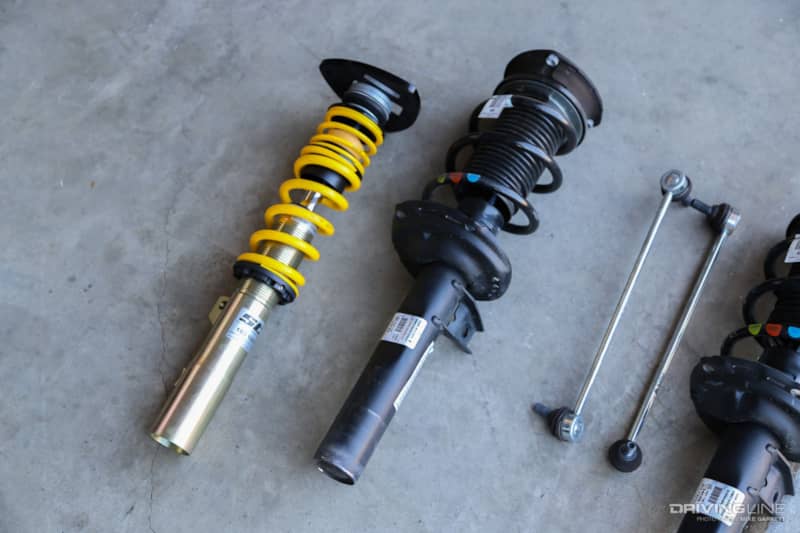
Inside a strut is similar to the inside of a standard shock, while the outside serves as a load-bearing structural component of the suspension itself (typically replacing the upper control arm and ball joint, and also housing the spring mounting plate. Struts are favored in vehicle designs where budget is a concern.
Spring
Springs are the suspension component that connects the rest of the chassis to the road beneath the wheels. Found in both coil and leaf designs, springs hold up the weight of an automobile and allow the wheels and tires to move independently of the rest of the vehicle.
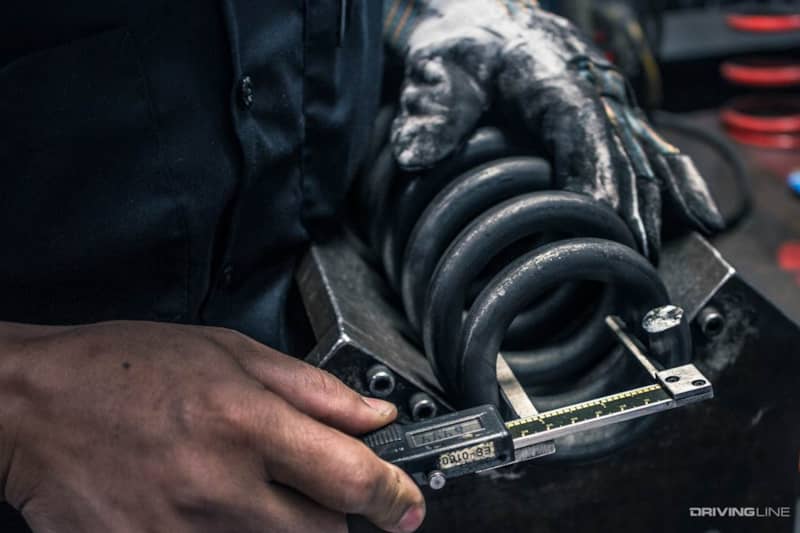
Springs are measured by their 'rate,' which is the amount of force required to compress them by one inch. This is measured in pounds per inch: the higher the rate, the 'stiffer' the spring, and the greater its ability to handle weight. A greater spring rate also translates into a harsher ride (as it is less likely to compress when encountering a bump in the road that moves the wheel), but it also improves body control by reducing both roll and lean in a corner.
Sway Bar
A sway bar connects one side of the chassis to the other and helps control weight transfer when moving through a corner at speed.
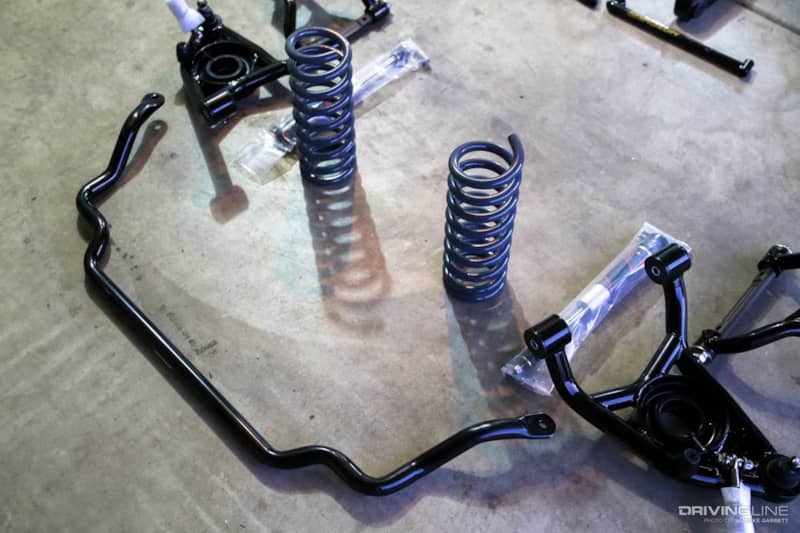
Also called an 'anti-roll bar,' a sway bar acts as a torsional spring that transfers weight by twisting to pull down on the inside suspension while cornering. In doing so, it helps to flatten out a vehicle's ride and improve handling. Sway bars can be mounted at both, or either, the front and rear of an automobile.
Toe
Toe refers to the angle of a wheel in relation to a straight line drawn straight down the side of a vehicle, running through the center of the hub.
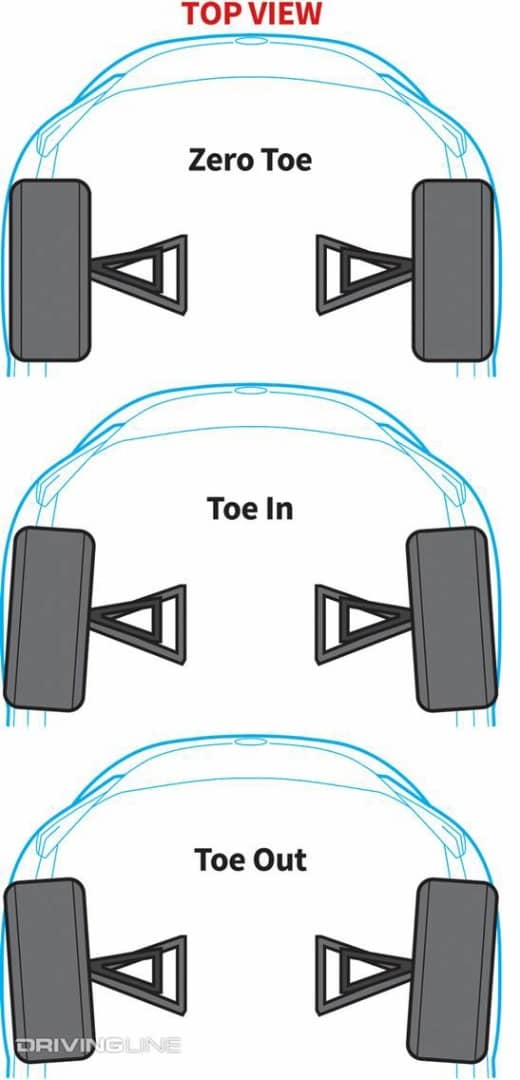
Neutral, or 'zero' toe makes for even tire wear, while 'toe in' (the front of the tire is pointed slightly inward) improves stability. 'Toe out' (the front of the tire is pointed slightly out) makes it easier to change direction, leading to quicker turn-in at high speeds, but decreases straight-line stability.







